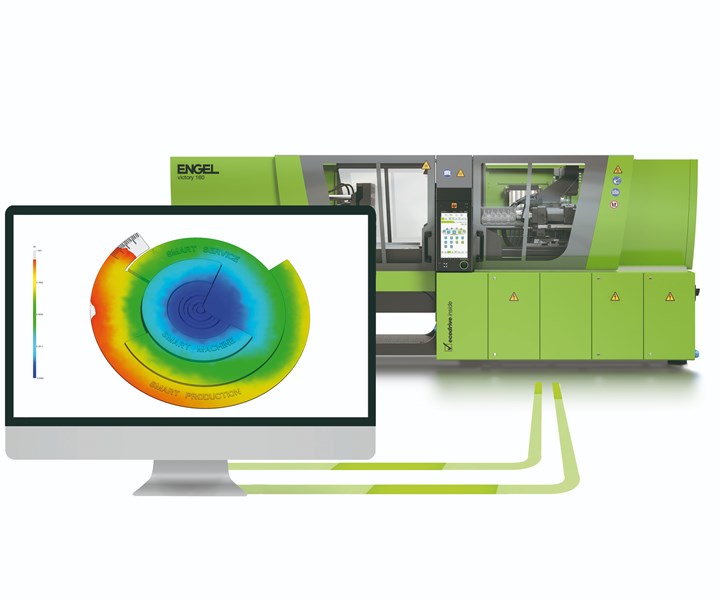Simulation Is Making Injection Machines Smarter
Engel’s simlink will refine offline simulation with results from actual molding and use Engel’s machine data to constrain simulation within the actual machine’s capabilities.
October’s K 2019 show in Düsseldorf revealed progress toward realizing the long-held goal of integrating mold-filling simulation with injection molding machines (see show report in January issue). News from Engel includes a collaboration with Autodesk Moldflow to integrate simulation with injection process control. While other machine builders, like Arburg, Wittmann Battenfeld and, most recently, Sumitomo Demag (see below), are investigating ways to use flow simulation to analyze the injection process in real time, Engel is focused on using simulation offline to optimize both the prediction of molding results and the actual machine settings for a given mold. This simlink software is now being tested with specific customers and is expected to become available globally in 2020.

Engel is developing simlink for two-way communication between the injection machine and offline simulation.
Engel envisions two-way communication. On the one hand, the machine can tell Moldflow what its true processing capabilities are, so that the simulation can recommend more realistic process settings that can be achieved by this specific machine. After performing the simulation based on the constraints of the actual machine’s performance capabilities, the process settings can be imported directly into Engel’s CC300 machine controller. Then, after performing a real-world molding trial, the process results can be re-transmitted to Moldflow to refine the simulation based on what really occurred inside the mold. Further optimized process settings can then be uploaded again to the injection press.
This approach is based on use of Engel’s econnect customer portal. The user can go online and select the machine intended for a molding job, and then download from Engel the parameters for machine capabilities—speeds, pressures, acceleration ramps, and temperatures. That way, Engel says, the simulation won’t recommend process values for a machine you don’t have.
Sumitomo (SHI) Demag also revealed at the show that it is working toward integrated mold-filling simulation with its injection-machine controls. Sumitomo Demag is collaborating with German software startup SHS plus GmbH to develop online simulation of plastication, filling and cooling, along with a knowledge database. Artificial intelligence (AI) will use that database to predict melt quality and temperature and use those to optimize the filling simulation.
Related Content
-
Understanding the Effect of Pressure Losses on Injection Molded Parts
The compressibility of plastics as a class of materials means the pressure punched into the machine control and the pressure the melt experiences at the end of fill within the mold will be very different. What does this difference mean for process consistency and part quality?
-
Hot Runners: How to Maintain Heaters, Thermocouples, and Controls
I conclude this three-part examination of real-world problems and solutions involving hot runners by focusing on heaters, thermocouples, and controls. Part 3 of 3.
-
Use These 7 Parameters to Unravel the Melt Temperature Mystery
Despite its integral role in a stable process and consistent parts, true melt temperature in injection molding can be an enigma. Learning more about these seven parameters may help you solve the puzzle.






